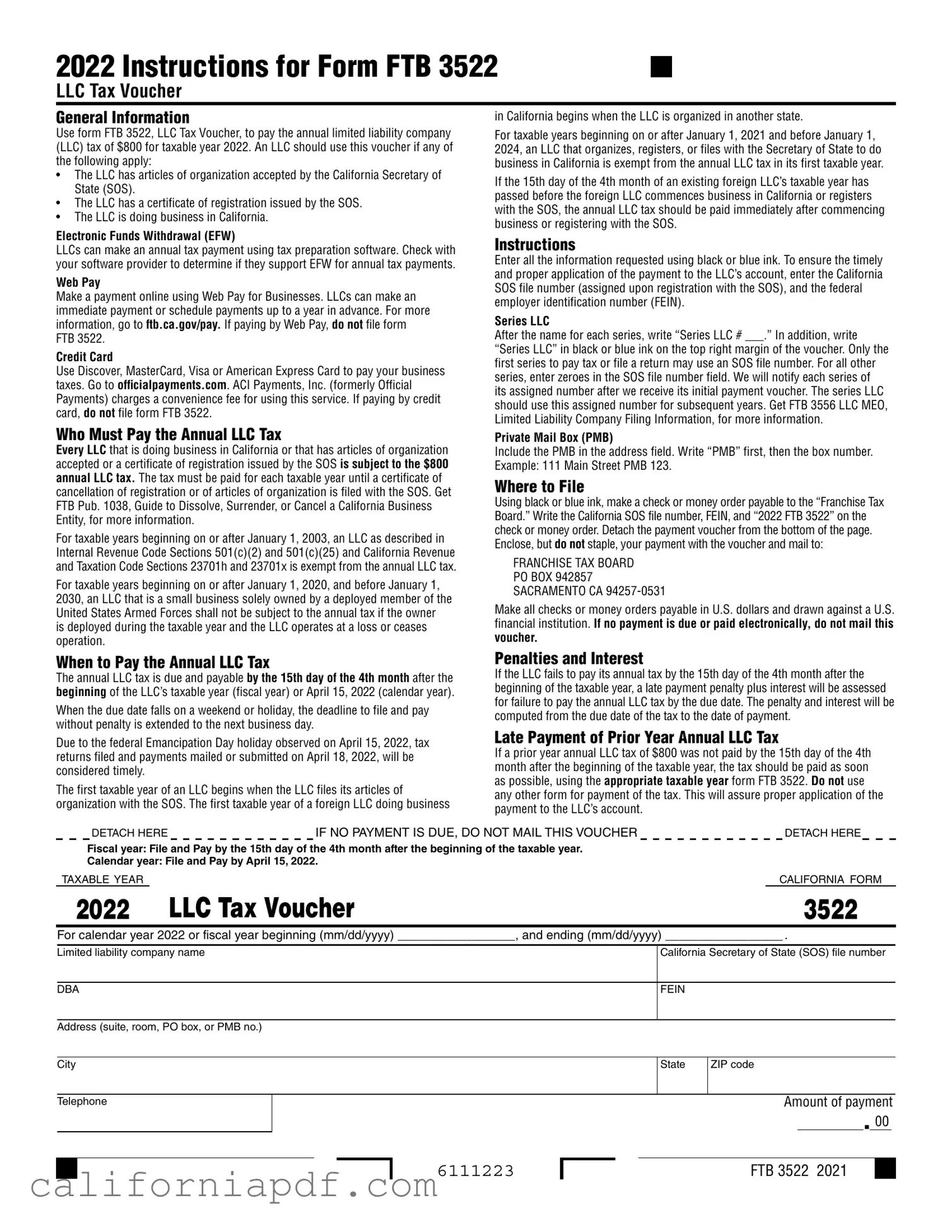The California Form 568, Limited Liability Company Return of Income, shares similarities with the California 3522 form as both pertain specifically to the taxation and financial obligations of limited liability companies (LLCs) within the state. While Form 3522 is used for the payment of the annual LLC tax, Form 568 is comprehensive, focusing on reporting the income, deductions, and tax liability of an LLC for a given tax year, thereby ensuring the state has a complete financial profile of the entity.
Form 540-ES, California Estimated Tax for Individuals, parallels the California 3522 form in that both involve the advance payment of taxes. However, whereas Form 3522 serves business entities like LLCs, Form 540-ES is designed for individuals who expect to owe taxes on income not subject to regular withholding. This prepayment approach in both forms helps taxpayers manage their tax liabilities more efficiently by spreading payments over the tax year.
The California Form 100-ES, Corporation Estimated Tax, is akin to the Form 3522 as both are geared towards future tax payments. Form 100-ES is utilized by corporations to submit their estimated tax payments, similar to how LLCs use Form 3522 to pay their annual tax. These estimated payments are crucial for both corporations and LLCs in managing cash flow and avoiding underpayment penalties.
The California Form 565, Partnership Return of Income, while distinct in its target audience, mirrors the Form 3522 in the sense that it deals with the reporting and taxation obligations of partnerships. Both forms address the compliance requirements of business structures operating in California, ensuring that the financial activities of these entities are fully accounted for during the tax year.
Similar to the California 3522 form, the Schedule C (Form 1040), Profit or Loss from Business, is another document used in the tax filing process, specifically by sole proprietors and single-member LLCs treated as disregarded entities. While Schedule C pertains to federal income tax filings and the 3522 form deals with state-level obligations, both require detailed financial information to accurately assess tax liabilities based on business income.
California Form 109, Payment for Automatic Extension for Corporations and Exempt Organizations, shares a procedural similarity with Form 3522 in providing a mechanism for entities to meet their tax obligations beyond the standard deadline. While Form 3522 facilitates the payment of the annual LLC tax, Form 109 is utilized to extend the filing deadline for corporations and exempt organizations, showing how different forms cater to varied needs yet aim to maintain tax compliance.
The California Form 3500, Exemption Application, while primarily focused on securing tax-exempt status for eligible entities, intersects with the purpose of the Form 3522 in the broader context of entity registration and state compliance. Entities successfully granted exemption through Form 3500 may alter their tax obligations, thereby influencing the relevance or application of other tax forms, including the 3522.
Similar to Form 3522, the FTB 3536 (Estimated Fee for LLCs) is another essential document for LLCs operating in California. It is designed for the payment of estimated fees based on total annual income. Both forms are integral in fulfilling the financial responsibilities of LLCs to the state, with the 3522 covering the flat annual tax and the 3536 addressing income-based fees.
Form 3554, New Employment Credit, although designed for a different purpose, shares the intent of facilitating tax benefits for businesses, much like Form 3522 facilitates the compliance with tax obligations. Form 3554 offers a credit for qualified businesses hiring new employees in designated areas, illustrating the state's broader efforts to manage tax liabilities and incentivize economic activity across diverse business operations.
Finally, the California Statement of Information (Form LLC-12) is required by LLCs and serves a function complementary to the Form 3522 by maintaining updated records with the Secretary of State. Though LLC-12 focuses on operational and structural information of the company, rather than its tax liabilities, submitting this form along with meeting tax requirements through forms like 3522 forms a complete picture of an LLC's adherence to state regulations.

